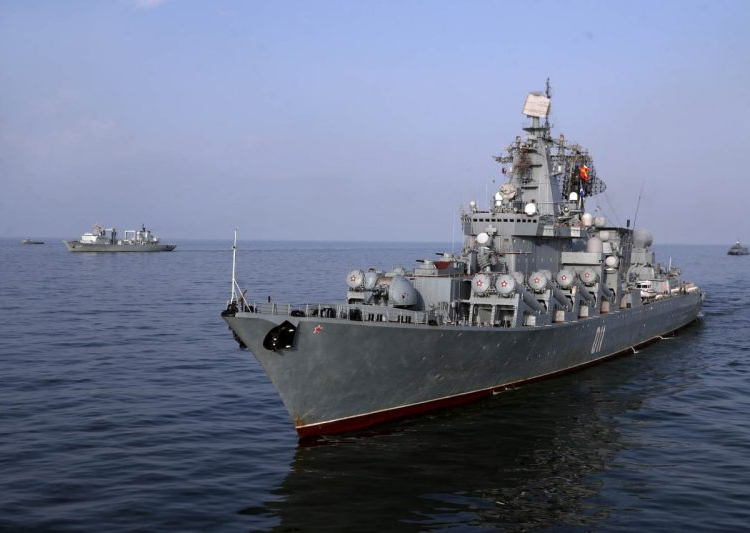In displaying of naval cooperation, the Gulf of Oman became the stage for the ‘Marine Security Belt 2024’, a joint naval exercise involving Iran, China, and Russia. The exercise, which commenced last week Tuesday, saw the participation of over 15 ships, supported by naval helicopters from the three countries.
Observers from South Africa, along with representatives from Azerbaijan, Kazakhstan, Oman, and Pakistan, were present to witness the drills, which concluded on Friday, with the sea phase ending a day earlier.
The exercise featured an impressive lineup of naval power. Russia’s contribution included the missile cruiser Varyag and the frigate Marshall Shaposhnikov. China dispatched the guided-missile destroyer Urumqi, the guided-missile frigate Linyi, and the replenishment vessel Dongpinghu, all part of the 45th China Naval Escort Task Force operating off East Africa. Iran’s fleet was represented by ten naval vessels.
This military exercise is aimed at protecting economic activities in the region (Indian Ocean) by surface and aerial units of the naval forces of the Iranian army and the Islamic Revolution Guards Corps of Iran, as well as surface, subsurface, and aerial units of the armies from China and Russia.
More than 20 ships are participating in the exercise, with two warships from the Russian Navy Pacific Fleet, cruiser and fleet flagship RFS Varyag (011) and destroyer RFS Marshal Shaposhnikov (543). Both ships left their home port of Vladivostok on Jan. 22 for a scheduled deployment to the Indo-Pacific and Middle East. Previously, both ships took part in the Indian Navy-hosted multinational naval exercise Milan 2024, held in late February.
The People’s Liberation Army Navy (PLAN) deployed the 45th China Naval Escort Task Force, – which includes destroyer CNS Urumqi (118), frigate CNS Linyi (547) and fleet oiler CNS Dongpinghu (902) – after handing over its anti-piracy duty on March 4 to the 46th Task Force. The 46th Task Force consists of destroyer CNS Jiaozuo (163), frigate CNS Xuchang (536) and fleet oiler Honghu (906).
Iran’s participation consisted of both the Iranian Navy and the Iranian Revolutionary Guard Corps Navy (IRGCN). Among the Iranian Navy ships taking part in the drills were frigates IRIS Alvand (71), IRIS Dena (75) and IRIS Jamaran (76), while IRGC ships include corvettes Shahid Soleimani (FS313-01) and Shahid Abu Mahdi al-Muhandis (PC313-01), fast-attack craft Shahid Tavassoli (P313-4) and auxiliary ship Shahid Mahmoudi.
The drills commenced with tactical manoeuvring exercises, followed by live firing against both surface and aerial targets, simulating unmanned air vehicles. Notably, the drills included nighttime firing, demonstrating the fleets’ operational readiness under all conditions.
A highlight of the exercise was the hostage rescue drill conducted on Wednesday. The fleets were divided into two task groups, one comprising Russian and Iranian ships, and the other Chinese and Iranian ships. Two Iranian vessels played the roles of hijacked merchant ships in a scenario designed to test and enhance the navies’ capabilities in dealing with maritime threats.
Admiral Mostafa Tajaddini, the spokesperson for the exercise, emphasized that the drills aimed to bolster the security of international maritime trade, counter piracy, and combat maritime terrorism. Additionally, the exercise served as an opportunity for the navies to refine their skills in naval rescue and relief operations and to share valuable operational and tactical experience.
The Russian Ministry of Defence highlighted the exercise’s focus on protecting maritime economic activities, underscoring the strategic importance of the Gulf of Oman—a vital corridor for global commerce.
This year’s ‘Marine Security Belt’ marks the fifth iteration of such exercises between the three nations, reaffirming their commitment to security and cooperation in one of the world’s most crucial maritime regions.





